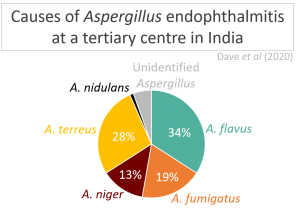Submitted by Aspergillus Administrator on 16 January 2013
There is a group of diseases that is neglected as they seem to offer less potential for profit for the major drug companies. (see dndi.org).
The new MSF analysis finds that although neglected diseases have been estimated to account for roughly 11% of the world’s global disease burden, in the last decade these illnesses garnered only 4% of the world’s new therapies and 1.2% of new chemical entities. If new drugs were distributed on the basis of disease burden, neglected diseases would have received 89 new products instead of 37, says Strub-Wourgaft. But the future may look a little brighter. The new analysis estimates that, given the current pipeline, as many as 4.7 new products could be approved each year for neglected diseases through 2018. “There have been encouraging signs compared to the last report,” Balasegaram says, but “we’re still far behind where we want to be.”
There have been efforts by governments around the world to try to redress this problem by supporting research and development of new drugs for these diseases over the last 10 years – including fungal diseases – but as yet there is apparently no sign of an increase in the number of new drugs emerging.
The new analysis, presented today at a symposium in New York, shows that of the 850 new therapies and vaccines approved by the US Food and Drug Administration, the European Medicines Agency and other agencies between 2000 and 2011, 37 focused on neglected diseases, and just four of those were new chemical entities. The work builds on a pioneering paper published in 2002 by members of the Drugs for Neglected Diseases Working Group, which counted 1,393 new drug approvals—16 of which focused on neglected diseases—between 1975 and 1999 (Lancet 359, 2188–2194, 2002). According to DNDi, 11 of those 16 drugs could be considered new chemical entities. The numbers suggest that although the rate of approvals for drugs for neglected diseases has gone up, the rate of approvals for new chemical entities seems to have remained relatively flat.
Some suggest that as drug development takes over 10 years then we will now start to see the number of new drugs for neglected diseases start to rise (after 10 years of investment by governments) but others note that drug development funds have been cut by governments as they focus funds on basic research once again while money is short in the global recession.
News archives
-
Title
Date



